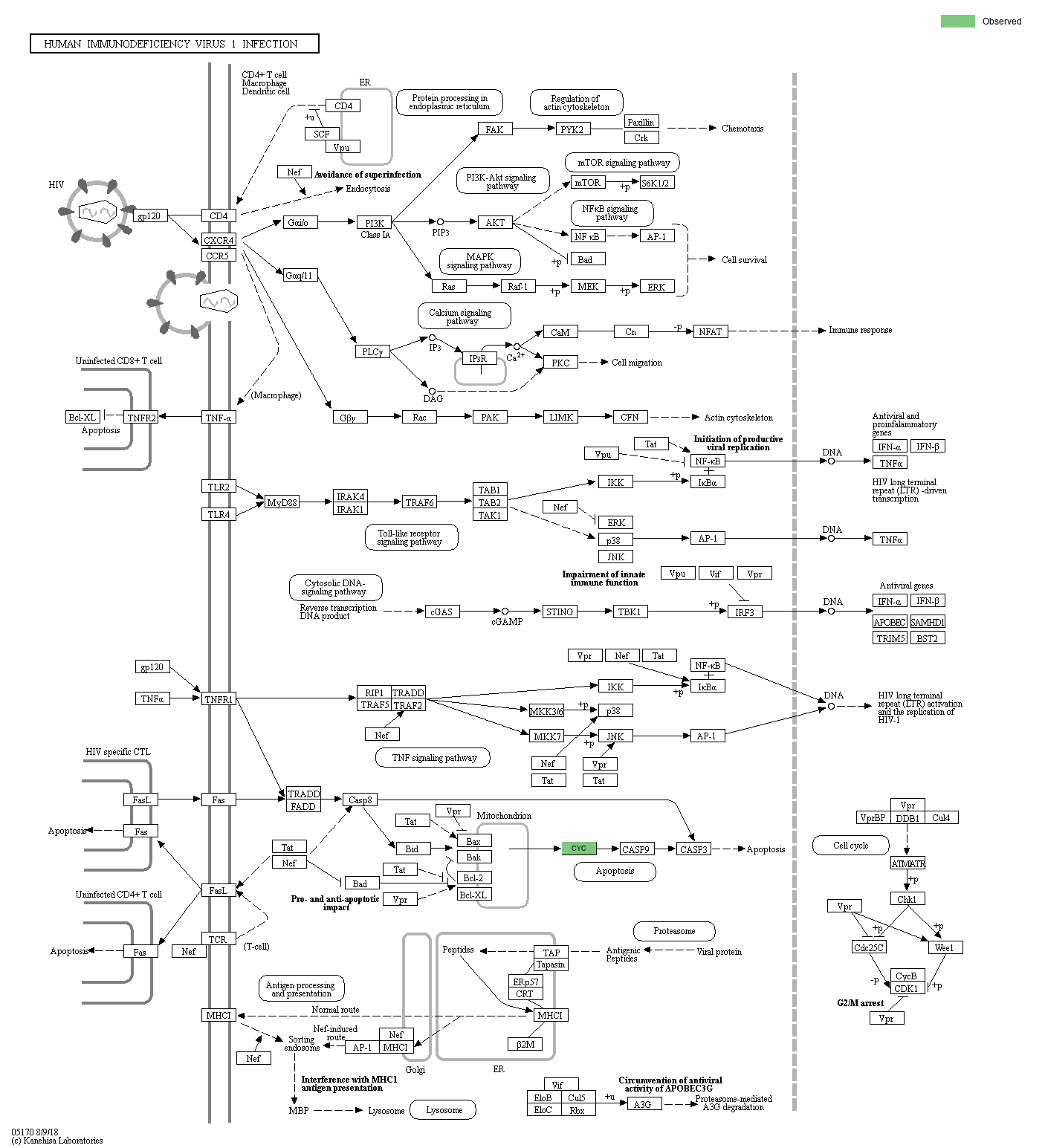|
Human immunodeficiency virus type 1 (HIV-1) , the causative agent of AIDS (acquired immunodeficiency syndrome), is a lentivirus belonging to the Retroviridae family. The primary cell surface receptor for HIV-1, the CD4 protein, and the co-receptor for HIV-1, either CCR5 or CXCR4, are found on macrophages and T lymphocytes. At the earliest step, sequential binding of virus envelope (Env) glycoprotein gp120 to CD4 and the co-receptor CCR5 or CXCR4 facilitates HIV-1 entry and has the potential to trigger critical signaling that may favor viral replication. At advanced stages of the disease, HIV-1 infection results in dramatic induction of T-cell (CD4+ T and CD8+ T cell) apoptosis both in infected and uninfected bystander T cells, a hallmark of HIV-1 pathogenesis. On the contrary, macrophages are resistant to the cytopathic effect of HIV-1 and produce virus for longer periods of time.
|
 Human immunodeficiency virus 1 infection - Reference pathway
Human immunodeficiency virus 1 infection - Reference pathway

 Human immunodeficiency virus 1 infection - Reference pathway
Human immunodeficiency virus 1 infection - Reference pathway

